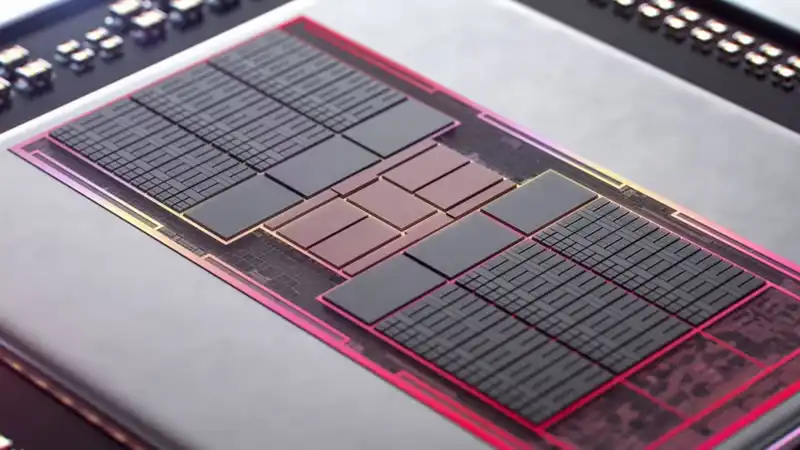A prominent leaker has provided more details about the changes AMD is looking to implement for ray tracing in its next-generation GPU architecture, RDNA 4. While some updates appear to significantly enhance some aspects of the algorithm, the leak also suggests that we are not going to see a comprehensive overhaul of the ray tracing unit.
The leaker in question is Kepler_L2 on X (via Wccftech), who has earned a reputation for providing accurate predictions about upcoming GPUs and dropping the occasional piece of documentation, like this one.
It must be said that the heavily redacted “feature descriptions” are not particularly informative, as there is little to indicate what exactly has changed. However, the main indication that at least one aspect of ray tracing has been soundly enhanced is the “Double Intersect Ray Tracing Engine.”
The name implies one of two things: either the AMD RT unit in RDNA4 is twice as large as the RT unit in RDNA3, or it can simply handle twice as many ray-triangle intersection calculations. In the end, it doesn't matter how it is improved, as long as the performance of the ray tracing is significantly improved. [Nvidia's current RTX 40 series has noticeably better ray tracing performance than AMD's GPUs, so a significant improvement is not only expected, it is quite demanded.
However, when it comes to ray tracing and performance, it is not only about handling numerous ray and triangle intersection calculations; traversing the BVH (bounding volume hierarchy) acceleration structure is also time consuming and puts a lot of load on the GPU's cache system The GPU's cache system is also slow to traverse the BVH (Bounding Volume Hierarchy) acceleration structure.
Therefore, AMD has added some optimizations to improve this area, but due to lack of information we cannot determine how important they are. Most importantly, however, AMD makes no mention of using ASICs (application-specific integrated circuits) to speed up BVH traversal.
In RDNA 2 and 3, this is done via compute shaders running on the GPU's core, and if they are busy processing that, then they cannot be used for anything else, specifically the ray shaders themselves. On the largest Navi GPUs, this is not a major problem because the chips have a huge number of compute units (CUs) to deal with the problem, but as you move down the hierarchy, the lack of dedicated traversal units becomes more noticeable.
Of course, AMD could add them, and this is what is hidden in the redundant parts of the document, but if I were in the leak business, this would be the first thing I would show people. This is because Nvidia's ray tracing unit has an independent ray triangle crossing engine and BVH traversal circuitry, which gives it superior performance.
Kepler_L2 also believes that most of the RT updates will be used in the upcoming PlayStation 5 Pro. At the time, there was a lot of fuss over claims that the PS5 Pro GPU would support BVH8 (a traversal shader that runs through eight child nodes from each node of the BVH).
This is double the number in RDNA 3 and may refer to the “Double Intersect Ray Tracing Engine”. If so, don't expect the game's ray tracing to automatically be twice as fast.
I know that for many PC gamers, ray tracing is still seen as an unnecessary gimmick, and AMD's initial implementation was a wise choice to not put too much of their critical hardware space into something that would only significantly reduce performance It was. [However, by the time RDNA 4 graphics cards hit retail store shelves, both Intel and Nvidia will also likely have launched their next GPUs, which in Nvidia's case will be the fourth iteration of RTX technology.
Raytracing is here to stay and let's hope AMD still has something special tucked away to put their GPUs on equal footing with Nvidia's GPUs.
.

Comments